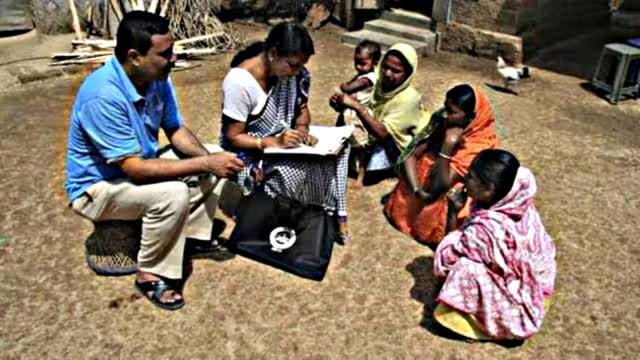India’s First Digital Census 2027 to Geo-Tag Every Building: A Giant Leap in Data Accuracy

Image via The Indian Express
New Delhi | September 1, 2025 – For the first time in history, India’s Census will geo-tag every single building across the country. The move will be part of Census 2027, which is set to be India’s first fully digital census. Officials confirmed that both residential and non-residential structures will be mapped with precise geographic coordinates.
This landmark decision marks a big shift in the way India collects data. Until now, census staff relied on hand-drawn sketches to prepare maps. These often lacked accuracy. With geo-tagging, every house, shop, office, and institution will be digitally placed on a map with latitude and longitude details.
What is Geo-Tagging in Census 2027?
Geo-tagging means linking a building to its exact spot on the Earth using GPS. During the house-listing phase, enumerators will use a mobile app to capture building details. At the same time, the app will record the location.
This data will be linked to Houselisting Blocks (HLBs)—smaller mapped areas that census workers cover. Instead of sketch maps, a Digital Layout Map (DLM) will now be created automatically from geo-tagged information. This ensures precision and reduces duplication.
The government already geo-tags assets built under flagship schemes like Pradhan Mantri Awaas Yojana. Census 2027 will expand this to every building in India—urban, rural, public, and private.
Why Geo-Tagging Matters for India
- Accurate Housing Data – Officials can count houses and households more precisely. Earlier, mismatched records led to under- or over-estimates.
- Efficient Staff Deployment – Workload distribution for field officers becomes easier when each building is mapped.
- Better Resource Planning – Policies on housing, health, education, and transport can use exact location data.
- Transparency – Digital maps make census work easier to verify and monitor.
- Foundation for Smart Governance – With location-based records, India can integrate census data with future urban planning tools.
India’s First Digital Census: What’s New in 2027
Census 2027 is set to be India’s first digital census. Everything from data entry to supervision will happen through technology.
Major Features
- Mobile App for Data Collection – Enumerators will use secure tablets or phones instead of pen and paper.
- Census Management and Monitoring System (CMMS) – A real-time dashboard will track progress, flag errors, and help supervisors monitor fieldwork.
- GPS Tagging and Geofencing – No village, street, or block will be left uncounted.
- Machine Validation – Errors such as unlikely household sizes or inconsistent ages will be flagged instantly.
- Code Directory System – Standardized codes will help with uniform entries in multiple languages for caste, language, and occupation.
- Self-Enumeration Option – For the first time, citizens can enter details themselves through a web portal.
The Two Phases of Census 2027
- House-Listing Phase
- Starts October 2026 in snow-bound regions.
- Begins March 2027 in the rest of India.
- Records building details: use, materials, number of rooms, access to water, electricity, toilets, and ownership of assets like vehicles, internet, or TV.
- Geo-tagging of every building will be done in this phase.
- Population Enumeration Phase
- Scheduled for early 2027.
- Will collect details of every person: age, gender, caste, marital status, literacy, occupation, and migration history.
- For the first time since 1931, caste data will also be collected.
State-Wise Timeline Highlights
- Uttar Pradesh: House listing May–June 2026; population enumeration February 9–28, 2027; final revision March 1–5, 2027. Homeless counted on February 28 at night.
- Rajasthan: House listing April–September 2026; population enumeration February 9–20, 2027. Homeless counted on February 28.
- Snow-Bound Regions: Operations begin early, from October 1, 2026.
Digital tablets, online portals, and geo-tagging will be used in both states. Other states will follow similar timelines.
How Geo-Tagging Improves Policy Planning
Accurate maps of every building will support multiple government initiatives:
- Urban Planning – Helps city planners identify areas needing infrastructure like roads, water, and sanitation.
- Rural Development – Ensures villages get fair distribution of schemes.
- Disaster Management – Quick identification of vulnerable zones during floods, earthquakes, or cyclones.
- Healthcare and Education – Locating households improves delivery of vaccines, healthcare centers, and schools.
- Digital India Goals – Geo-data can integrate with smart governance platforms.
Challenges Ahead
While the plan is ambitious, officials face challenges:
- Training Field Staff – Millions of enumerators must learn to use mobile apps and GPS tools.
- Connectivity Issues – Remote villages may lack stable internet for real-time data transfer.
- Data Privacy – Geo-tagging raises concerns over how sensitive household information will be stored and secured.
- Technical Errors – GPS may not always be accurate in dense urban areas or forests.
The Census office is expected to address these through training, offline data capture options, and encryption.
India’s Census Journey: From Paper to Digital
India has conducted 15 regular censuses since 1872. The last one, in 2011, was completely paper-based. The 2021 census was delayed due to the pandemic. Now, 2027 will not only be digital but also geo-referenced, making it the most advanced in the country’s history.
The scale is unmatched: India’s census covers over 1.4 billion people, making it the largest enumeration exercise in the world. With geo-tagging, it will also become the most location-accurate census ever attempted.